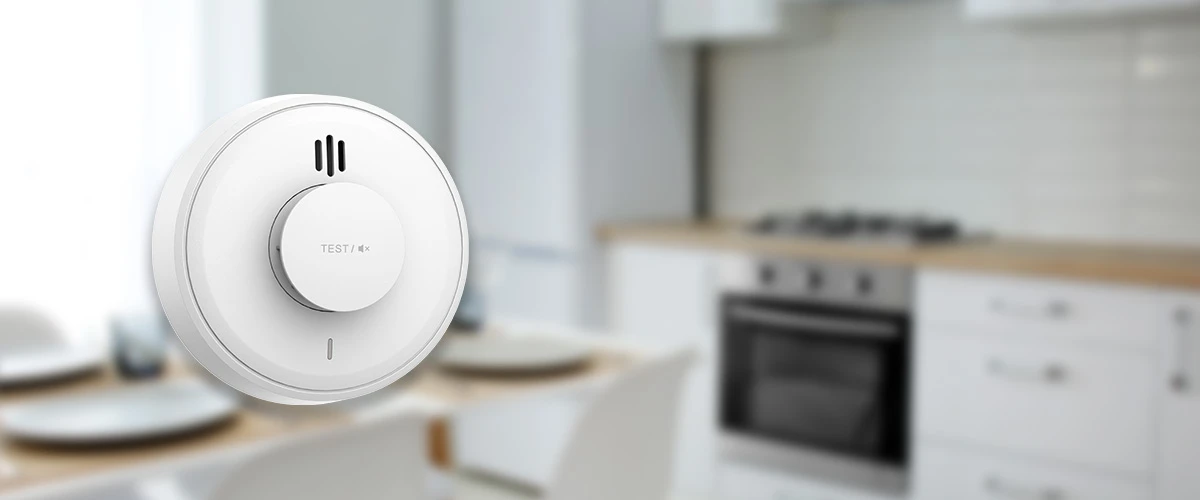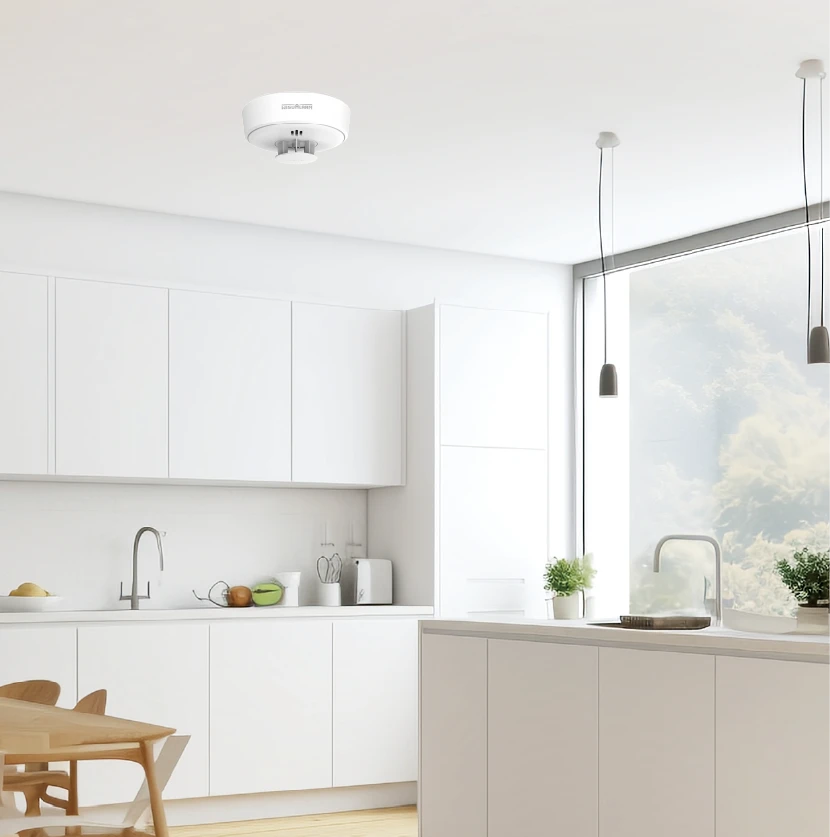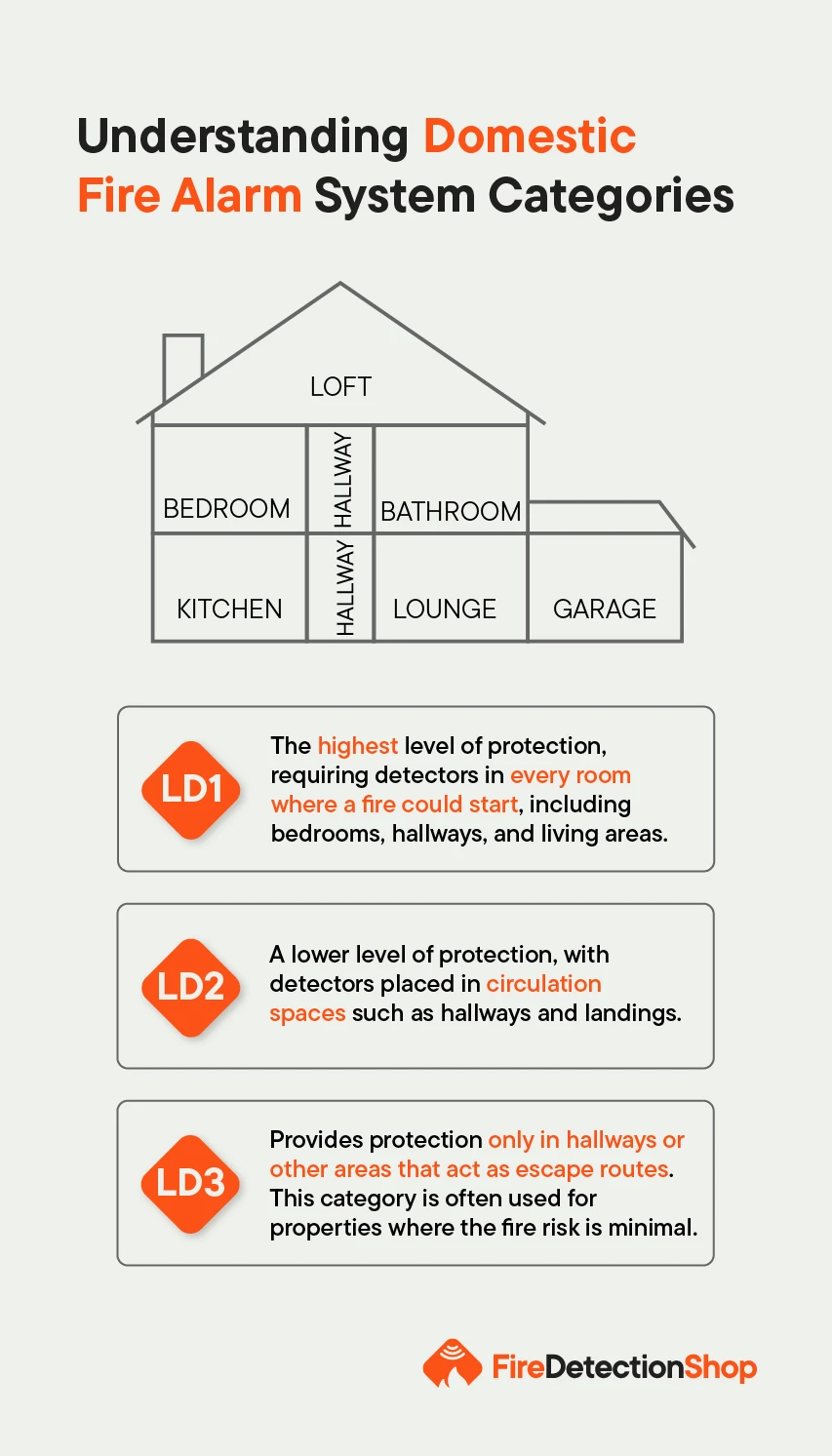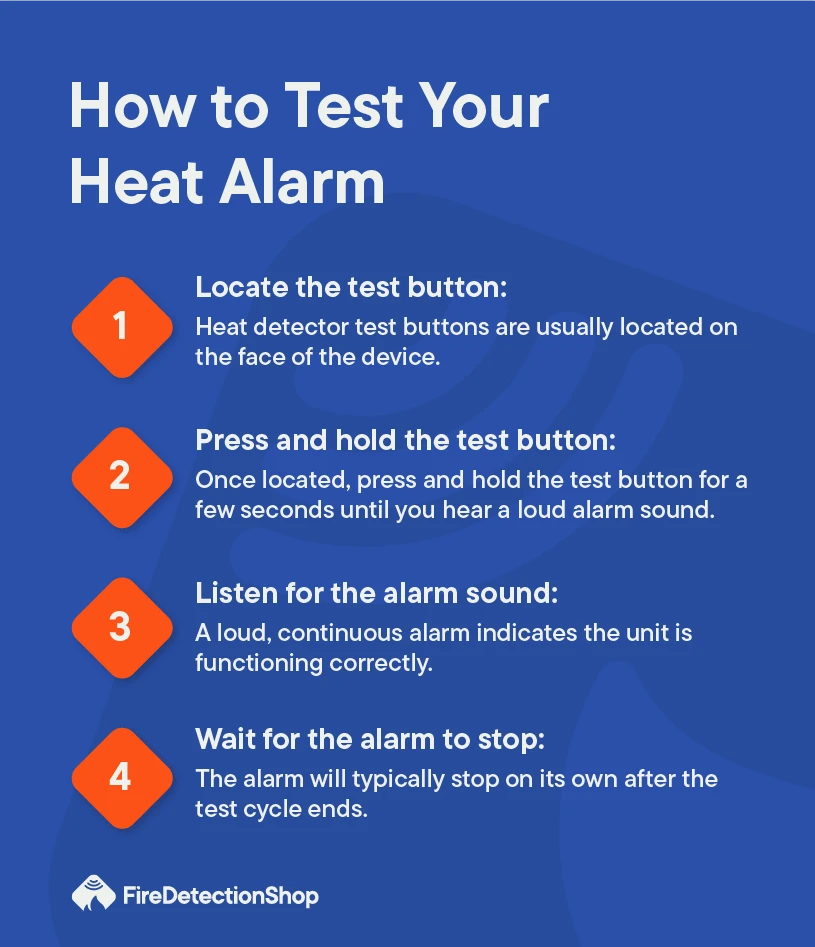
Need assistance?
Need Assistance? Call Us 0330 058 0630
Did You Know? We Sell Fire Alarm Systems as Complete Kits. Shop Now
29/04/2025 • by Alice P

For many of us, kitchens are the heart of the home. However, they are also spaces at high risk of fire. Kitchens have open flames and flammable ingredients. This means they have both fuel and heat for fire.
It’s no surprise that around 60 per cent of domestic fires start in the kitchen. Keeping our kitchens protected from fires is important, but not complicated. Heat alarms are the simple solution.
This guide explores the importance of heat alarms. Let’s start by looking at how home heat alarms protect kitchens, garages, bathrooms and other hot, dusty or steamy environments.
Heat alarms are fire detection devices that monitor temperature changes. When a rapid temperature rise is detected, they activate and emit a loud alarm to warn of potential fire.
It is important to know that heat detectors are not a replacement for smoke alarms. The two detection devices pinpoint different early warning signs of fire and are designed for use in different areas around the house.
According to UK government fire safety guidance, heat detectors should be used in kitchens where smoke alarms may trigger false alarms.
Both are vital for fire safety. Both should be installed in your home.

Heat alarms work by detecting extreme increases in temperature. If the room’s temperature spikes to around 58°C, the heat alarm will recognise that a fire has started and it will sound an alert.
Heat alarms continually monitor the temperature of a room for sudden spikes. A sudden temperature increase would trigger your kitchen’s heat alarm.
Because heat alarms use temperature to gauge the potential fire risk, they are ideal for protecting smoky, steamy or dusty environments. That makes heat alarms the perfect safety solution for kitchens, garages and bathrooms.

Heat alarms for kitchens should always be positioned centrally on the ceiling. Ideally, when installing your heat alarm, you should aim to position the detection device at least 300mm (12 inches) away from light fittings or walls.
Heat alarms help create a proactive approach to your home fire safety. However, the placement of your heat alarm will greatly impact the effectiveness of the detection device.
If your heat alarm is installed incorrectly, either too low or obstructed, there is a risk of the detectors being compromised. Essentially, you need to give your fire detection tools the best chance to catch fire early by placing them in safe, easy-to-access areas. In the kitchen, be careful not to install your heat alarm too close to open heat sources.
While kitchen heat alarms are highly recommended, heat alarms can also benefit areas outside of the kitchen. Garages, bathrooms and utility rooms all benefit from heat alarms. Not only does this protect these steamy, dusty and smoky areas, but it also improves the reliability of your fire safety network.
Interlinking fire alarms is another proactive fire safety approach that can increase your home’s scope of safety.
In the UK, installing heat alarms in the home is currently not a legal requirement. However, having a kitchen heat alarm is highly recommended to combat a high-risk area which smoke alarms may be unable to reliably protect.
The legal requirements for heat alarms in the home change depending on where you are in the UK.
Scotland Domestic Fire, Heat and Smoke Alarm Regulations:
One smoke alarm in the living room or the room used the most
One smoke alarm in every hallway and landing
One heat alarm in the kitchen
All alarms must be ceiling-mounted and interlinked
View more information on Scotland's smoke alarm regulations.
Wales Fire, Heat and Smoke Alarm Regulations:
One smoke alarm on each storey of the property
One carbon monoxide alarm in any room with a gas, oil, or solid fuel-burning appliance
There are no set requirements for heat alarms. Instead, installing them in a kitchen is heavily advised
Northern Ireland Fire, Heat and Smoke Alarm Regulations:
A smoke alarm is required in the living room, or the room used the most
A heat alarm is required in every kitchen
All smoke, heat and CO2 alarms must be interconnected
The regulations for landlords installing fire alarms, as detailed under the Smoke and Carbon Monoxide Alarm (Amendments) Regulations 2022, are slightly stricter.
These rules state that landlords must:
Invest in at least one smoke alarm for every storey of the home where there is a room used as living accommodation.
Install a carbon monoxide alarm in any room used as living accommodation which contains a fixed combustion appliance (excluding gas cookers).

To maintain your heat alarm, our expert engineers recommend:
1. Testing your heat alarm once a week.
2. Cleaning the heat alarm, checking its batteries and testing the device once every six months.
Investing in the right fire safety tools is how you start to build effective fire safety in your home. But to create long-lasting fire protection, you need to understand how to maintain your equipment. Maintenance for heat alarms is inexpensive and simple, but very important.
Our expert engineers are always available to offer any advice or support on the maintenance of your fire safety equipment.
Testing your heat alarm is a simple process:
1. Locate the test button: Heat detector test buttons are usually located on the face of the device.
2. Press and hold the test button: Once located, press and hold the test button for a few seconds until you hear a loud alarm sound.
3. Listen for the alarm sound: A loud, continuous alarm indicates the unit is functioning correctly.
4. Wait for the alarm to stop: The alarm will typically stop on its own after the test cycle ends.
Regular testing is crucial to check for any wear and tear on the detection device. At FDS, we recommend you test your heat alarms monthly.
Expert tip: Cleaning heat detectors is important since dust can build up on these alarms. This can gradually impact the heat alarm's effectiveness. When you are testing the heat alarm, make sure to clean the heat detector. This keeps the sensors working at their best and maximises your home fire protection.


Smoke alarms detect rising smoke particles. Heat alarms detect sudden shifts in temperature. Both detection devices are engineered to detect early warning signs of fire, allowing building occupants extra time to respond.
While smoke alarms are an effective safety solution for protecting the home from fire, they have limitations. Smoke alarms are more susceptible to false alarms triggered by dust, smoke and steam. They also cannot differentiate between dangerous smoke particles and cooking fumes.
In kitchens where controlled heat and smoke are often present, a smoke alarm would not be able to effectively function and therefore cannot reliably protect the space. Heat alarms fill in these gaps to enhance your home’s fire safety.

If your heat alarm is beeping or chirping, it could be warning you of a fire. If you suspect a fire, evacuate the building immediately and call emergency services.
If there are no signs of fire, the sound may indicate that the alarm has reached the end of its life and needs replacing.

Reduces False Alarms: Heat alarms provide dependable protection in dusty, steamy, or smoky environments that smoke alarms cannot cover.
Complies with Legal Requirements: In the UK, landlords are legally required to install smoke, heat and CO2 alarms in their properties. To comply with regulations, a heat alarms needs to be installed in the kitchen.
Direct Fire Detection: Heat alarms are compact devices with powerful fire detection. They are also easy to install and non-invasive, meaning you can fit your
Interlinked Fire Safety: Our WisuAlarm range of smoke, heat and CO2 alarms can be wirelessly interlinked. This seamlessly increases the scope of your home’s protection, alerting you and your family to potential danger wherever you are.

Typically, battery powered heat alarms are fitted with tamper-proof batteries lasting up to 10 years.
Worried about your heat alarm’s lifespan? Our collection of WisuAlarms all have a built-in low battery warning signal.

Heat alarms are triggered at a pre-set temperature. This is typically around 58°C.
The temperature which triggers a heat alarm will all be within the same range, but it is important to double-check. For example, our mains powered WisuAlarm is designed to detect class A1 fires. This means they will activate once the ambient temperature reaches between 54-65°C.
Fire safety in the home doesn’t have to be complicated or expensive, but it should be proactive. Heat alarms are powerful fire detection devices that are both cost-effective and simple to install. Whether you want to safeguard your kitchen or want extra fire protection in dusty or smoky rooms, heat alarms are the solution.
At Fire Detection Shop, we pride ourselves on making fire safety accessible. Whether you are looking to invest in equipment or want to strengthen your fire safety knowledge, we have you covered.